Four easy ways to train your balance for daily life

When we work on balance postures in yoga, we usually focus on maintaining a steady position for a certain amount of time. This is a very useful aspect of balance training but not the most important. After all, how often do we stand on one leg for an extended period of time in real life? In fact, the main benefit of static balance training is to improve dynamic balance.
Our balance is challenged most when we are in motion – whether we are walking (especially on uneven surfaces), going up or down the steps, hopping from rock to rock to cross a stream, and so on. To make this process smooth and balanced, we need to both initiate the movement and resist the momentum that carries us forward.
There are three types of dynamic balance:
1. Dynamic steady-state (maintaining a steady position during walking)
2. Proactive balance (anticipation of a predicted perturbation)
3. Reactive balance (compensation of an unpredicted perturbation)
While static yoga postures work well for developing the muscle strength required to maintain balance and promote overall structural integration, they do not directly train us for any of these types of dynamic balance. However, there are four easy ways to train your balance for daily life.
1. Move in and out of the balance pose
In the viniyoga tradition, we call this “repetition” (as opposed to “staying” in the pose). Moving in and out of the pose before holding it has many benefits. Relative to balance, it gives us an opportunity to refine our movement patterns. Remember how we talked about the process of “facilitation”? This means that our bodies and brains adapt to the changing external or internal conditions, learning how to deal with them more efficiently.
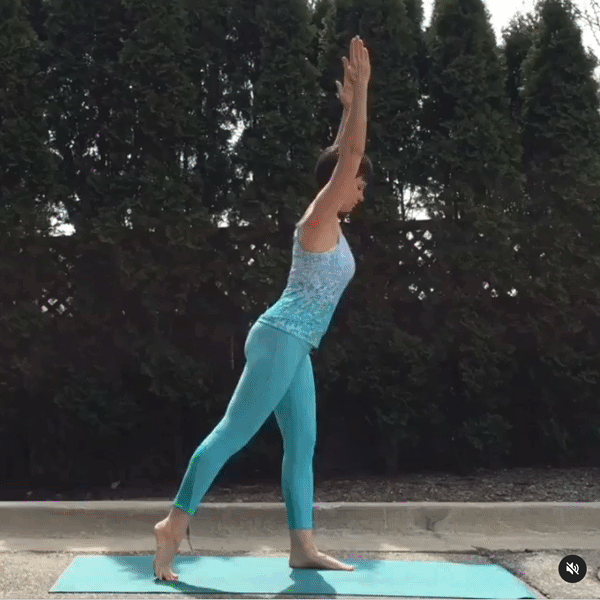
By moving in and out of the balance pose, we are teaching both the body and brain how to handle the shift in balance. We do it over and over again, so it becomes more automatic.
2. Move within the balance pose
This is particularly useful for training proactive balance. It simply means that when you are holding the pose, you move your leg, arms, or body while trying to keep the base steady.
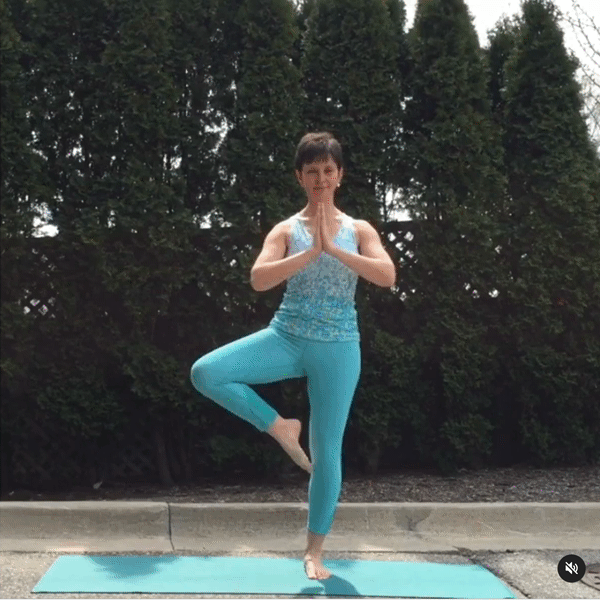
This trains your body and brain to anticipate a potential challenge to your balance and adjust accordingly. Ballerinas do it all the time, which helps them develop extraordinary balance for all those arabesque-s and fouette-s.
3. Move between two or more balancing poses
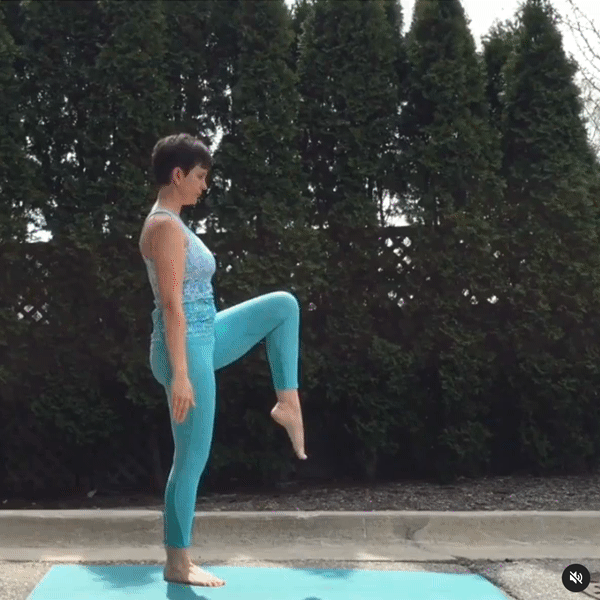
In this situation, your body and brain need to negotiate two different balancing challenges. It is particularly useful if you alternate balancing on one leg and then another, which imitates the action of walking and all other habitual, repetitive movements that we do in our daily lives. It helps you train the dynamic steady-state balance.
4. Try defying expectation movements

You can challenge your students on the spot without giving them a warning of which version of the balance pose is coming next, which means that they will have less time to prepare and will have to react to the challenge in real time. This is very useful in training reactive balance.
It is very easy to add some of the elements above to your balance training – try it for yourself and see if it makes a difference!

This yoga practice contains a number of simple standing balancing poses that will help you train both your static and dynamic balance.

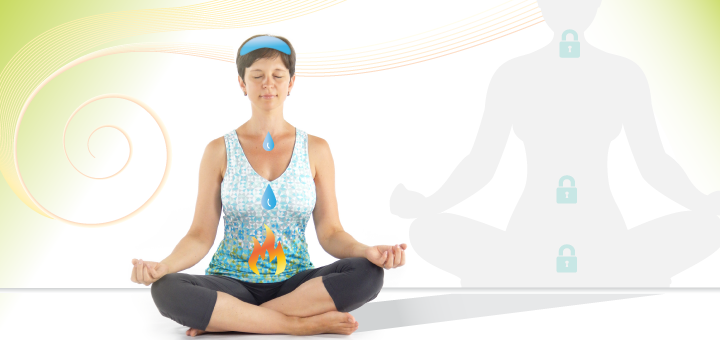
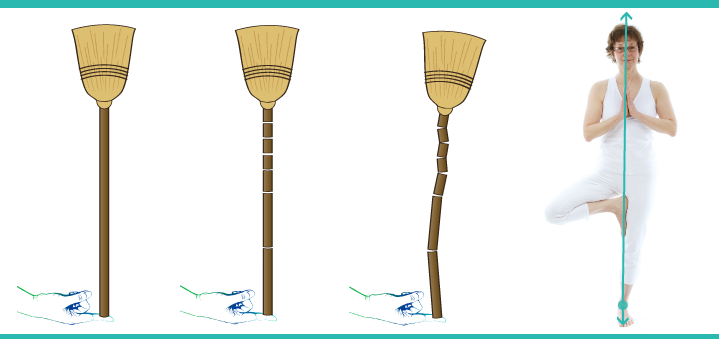
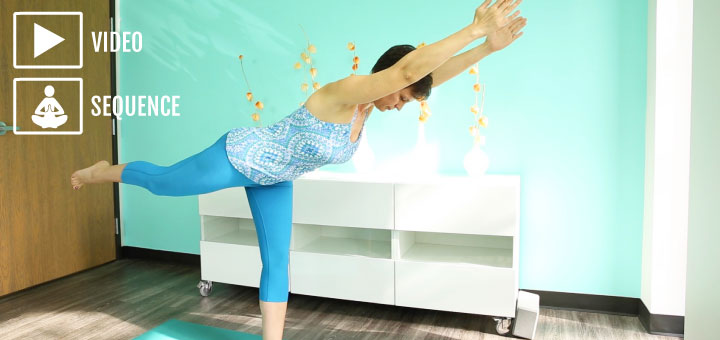






Thanks for this post. I am a big fan of yours, and always read your newsletter and posts. Thank you for all your intelligent work! Do you think balancing on something – like a foam block – can also help with dynamic balance?
Thank you Cassie! I am a big fan of props that make the base of support less unstable – foam block, bosu ball – things like that. You can add those tools to the moves above to challenge your balance even more. I see it as a progression path – static balance poses on the floor, then static balance poses on the prop, then dynamic balance challenges (like the ones above) on the floor, then the same ones on a prop – that sort of thing.
Hi there, I wonder if you think that these types of exercises would help if your balance ( vestibular system ) is being destroyed?
I have Menieres disease so I often feel dizzy & have eye movement that makes my brain feel dizzy. It is incurable & I do have exercises ( Cookson Hawley) to help strengthen my balance. What are your thoughts? I enjoy these emailed lessons.
Thanks, regards, Gail
Hi Gail! It’s hard to say how effective those moves would be for Meniere’s disease, but they are definitely worth trying. I would also recommend fixing your gaze on something stable while you work on those. I will be writing a separate post on the vestibular system specifically in couple of weeks- may be you would find that post useful?
Another great piece, Olga. I find your posts to be the “most real” of any yoga sites I follow or stumble upon. I love your “practical approach” to yoga and its values, and how you stay away from simply “showing off” how to “nail” great poses. I have been incorporating the movement of one balance pose to another and, well, many of the ideas you offer her, but I have done so more intuitively. Your work and explanations – and the very helpful visuals – all give me “real” reasons for why I have been doing what I have. Thank you so much for your work and its insights!
Kevin, you hit the nail on the head in describing Olga’s approach! As someone for whom anatomy and physiology doesn’t come naturally, Olga presents information in an accessible and practical way. With every post she manages to challenge me in some way, either mentally or physically.
🙂 Thank you Georgina!
Thank you Kevin! I know exactly the feeling that you are talking about. It’s so great to get external confirmation on things that you’ve already experimented with and experienced for yourself, and I am really happy to hear that my approach helps support your own exploration!
I really appreciate your content. It is always helpful, much more so than 95% of the stuff out there. Thank you.
Thank you Robin!
Olga, your post is just what I need to take balance further in my teaching. Replacing th ehold with fluid movement and control. This will make the session less static , keeping students engaged.
Thank you , Kay
Hi Olga, love this subject, as a senior I need to keep my balance especially when I trip etc. Unfortunately I don’t use Instagram. Can one use Instagram with their home PC? To date I rely on You Tube for videos…..sigh.